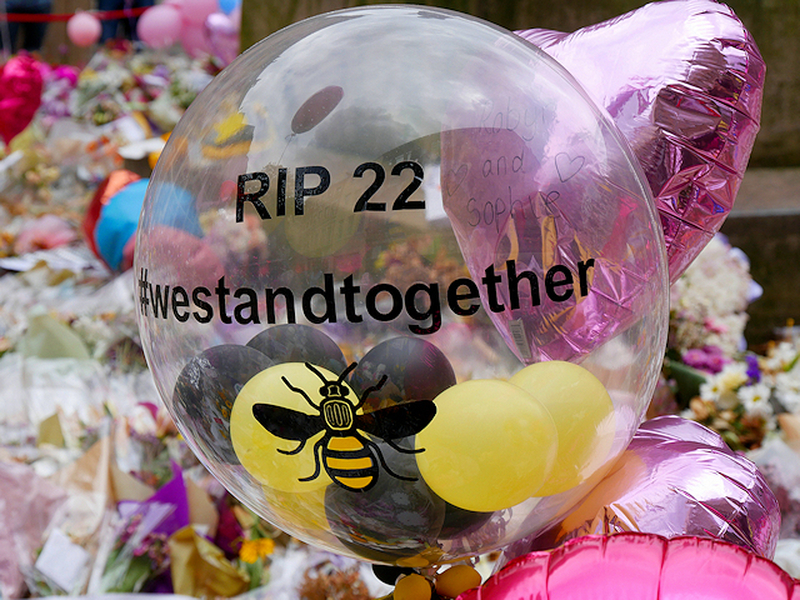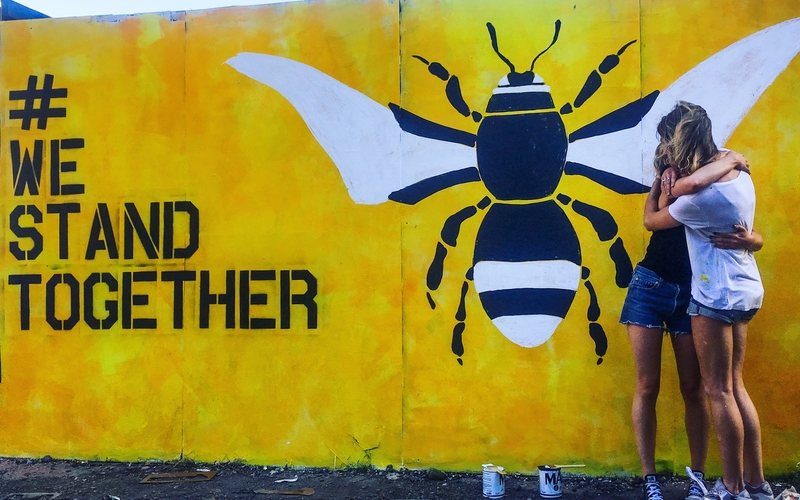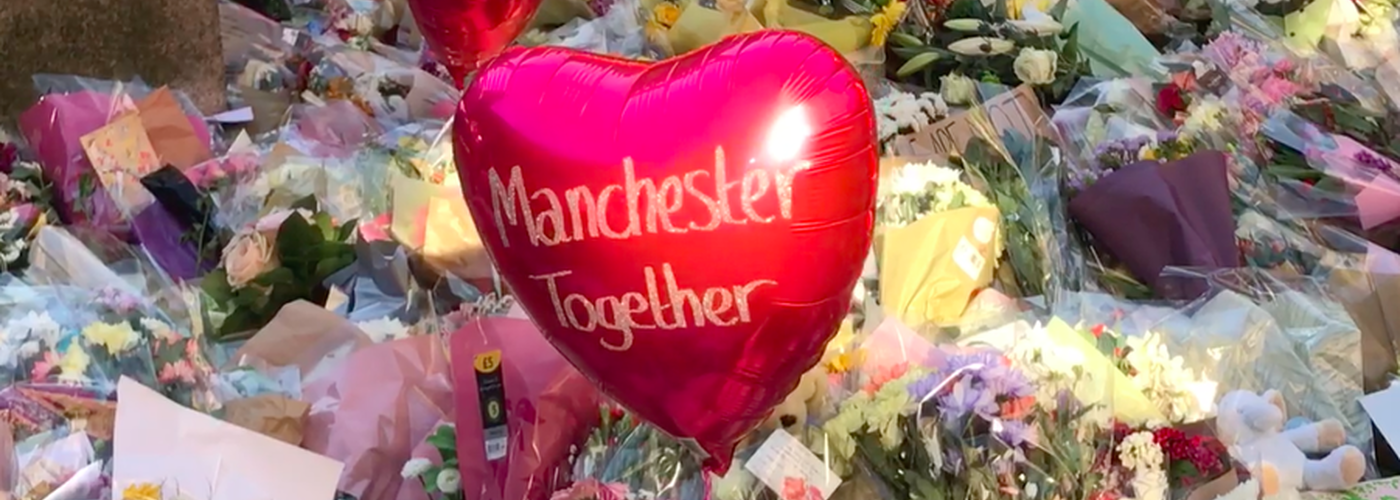Jonathan Schofield looks back at the aftermath of the 22 May terror attack, which killed 22 and injured over 130 more
I WAS on a tram from Piccadilly Station to Old Trafford when news started to filter through of the arena bomb attack. A terrorist, Salman Abedi, had blown himself up following an Ariana Grande concert. It was Monday 22 May, 2017.
Abedi, being a crazed Islamist, wasn’t interested in just blowing himself up, of course, he wanted to ascend to his twisted version of paradise, with the blood of innocents on his hands. His target had been chosen carefully. Ariana Grande was particularly adored by children and teenagers. The idea was to kill youth and maximise the impact and publicity. Life was meaningless to Abedi and remains so for his co-fanatics, only death matters. Cynical doesn’t get anywhere close. Nihilism fits better.
Monday 22 May 2017 was a tragic day. Yet, as is the way with these things, it subsequently found expression in the best of human nature
So, Abedi killed 22 innocent people, young and older, injuring many more and achieving nothing for his own (non) cause.
He did something else, proving how completely his actions had backfired.
He brought a city together in a spirit of reconciliation, compassion and tolerance. St Ann’s Square blossomed and around, aptly, the statue of Richard Cobden, people came from far and wide to show their respects, share their sorrow for the victims and underline how it takes more than one man on a medieval mission to break the spirit of a city and a country.

Manchester’s response was magnificent, nothing much was cancelled. The City Games went ahead, a huge Courteeners concert at Old Trafford cricket ground attended by 50,000 fans took place the following Saturday. Shortly after, also at Old Trafford cricket ground, the One Love benefit concert was broadcast across the world, headlined by Ariana Grande with guests such as Liam Gallagher, Pharrell, Miley Cyrus, Justin Bieber and Coldplay. The charity We Love Manchester quickly raised huge sums for the victims and their families.
And the sun was fierce. It shone down radiantly on the aftermath of 22 May, on the flowers, on the hundreds of film crews from around the world. Walking the city streets you could feel an extraordinary electricity in the air, throbbing with a mood solemn yet strong.
I was struck by how, a couple of days after the outrage, several hundred co-religionists of Abedi processed to St Ann’s Square to show that what this fool had done in the name of Islam was not in their name, and not how they understood the principles of their religion. They were accepted as fellow citizens. That Oasis’s Don’t Look Back in Anger became the anthem of the tragedy conveyed the overwhelming city emotion.
It has not always been like this. During WW1 German-owned businesses in Manchester were attacked. After Zionist terrorists killed British soldiers in the Palestine Mandate in 1946 there had been similar attacks on Jewish businesses in the city. We also have to be aware, right now, of how the spirit of May 22nd 2017 is so often betrayed in our city by racists of all creeds and colour. We have to remember that Abedi was local, that there are many things not right in the city/country/world which prompt hateful people to do hateful things.

One of the unexpected consequences of May 22nd was the popular adoption of the Manchester Bee. This symbol of energy and industry cresting the city coat of arms was an official tag rather than one for the people. Suddenly it was everywhere, especially on people’s arms and legs, as they queued up in their hundreds to be tattooed. The bee appeared on T-shirts, mugs, posters, billboards and in street art, and continues to do so to this day. It is now the most recognised animal symbol of any UK city. Say ‘bee’ and people say ‘Manchester’. The bee revealed how the bomb at the arena had fuelled a latent desire for a Manchester identity that remains powerful. Tony Walsh’s well-known poem, This is the place, was part of that.
Monday 22 May 2017 was a tragic day, a murderous day, a day of pain and horror. Yet, as is the way with these things, it subsequently found expression in the best of human nature. Instead of a closed fist balled in anger, arms were extended in friendship and support. In our open and culturally mixed society, under the rule of law, there is no better way to make fools of terrorists.
The second anniversary of the 22 May 2017 Manchester Arena terror attack will be marked with a civic memorial service at St Ann’s church at 2pm on Wednesday 22 May 2019.
Although it is recognised that many more will want to attend, it has been agreed with the families that the service will be a personal and private event for the families who lost loved ones, those injured and representatives of those who were first to respond.
Like last year, at 10.31pm on 22 May – the exact anniversary – bells will ring out from buildings across the city centre including Manchester Town Hall, Manchester Cathedral and St Ann’s Church.














